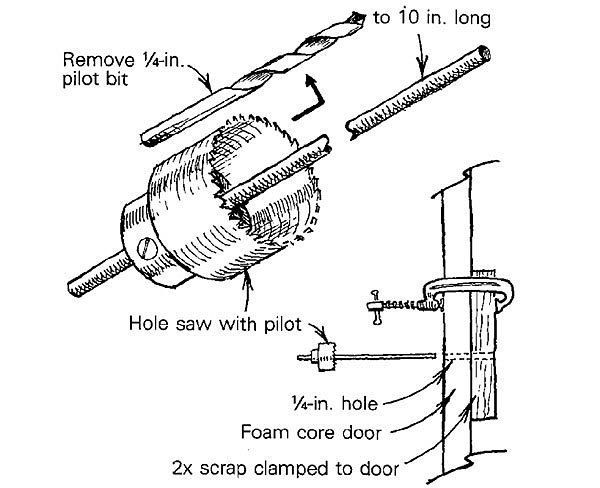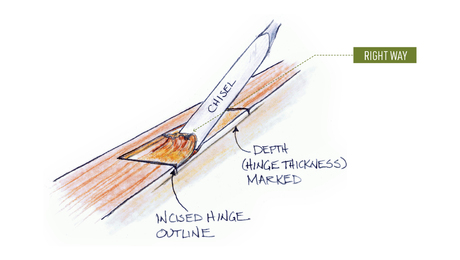
I had to drill holes for deadbolt locks in some steel doors that had foam cores, and I almost destroyed the first couple of doors using a standard hole saw because the 1/4-in. pilot bit would wander off course in the soft foam. To remedy the situation, I removed the pilot bit and replaced it with a piece of 1/4-in. mild-steel rod, as shown in the drawing. To use the modified saw, I first drilled a 1/4-in. pilot hole through the door and a 2x block clamped to the door. Using the pilot hole to guide the steel rod, I cut my holes with no wobble and no tearout. Incidentally, for this work I found that a bi-metal hole saw held its edge better than one made of steel.
—E. F. Bott, Jr., Troy, NY
Edited and illustrated by Charles Miller
From Fine Homebuilding #53




























View Comments
This method does work but drilling the pilot hole through the door from one side is just as tricky as trying to drill through the whole door with the hole saw. Careful layout of the center of the hole by squaring around the door edge (or using the template supplied by the manufacturer of the deadbolt), then use a spring loaded center punch (or a hammer & screw) to mark the center of the hole. Finally, bore in from both sides of the door to produce clean holes. Yes, a bimetal hole saw works best as the original tip states.
Agreed. After I drill the pilot hole I drill out the the larger cylinder hole with the hole saw in reverse. No wandering, jumping, snagging or getting hung up. Once through the steel I withdraw the hole saw remove the steel disc then cut the core with it in forward direction. Remove the door's core from the holesaw and then cut through the steel on otherside in forward direction because the core holds the holesaw steady.